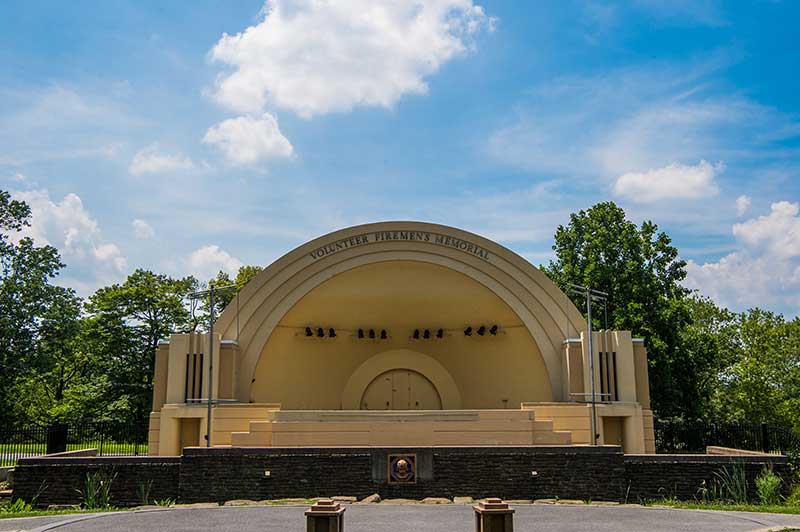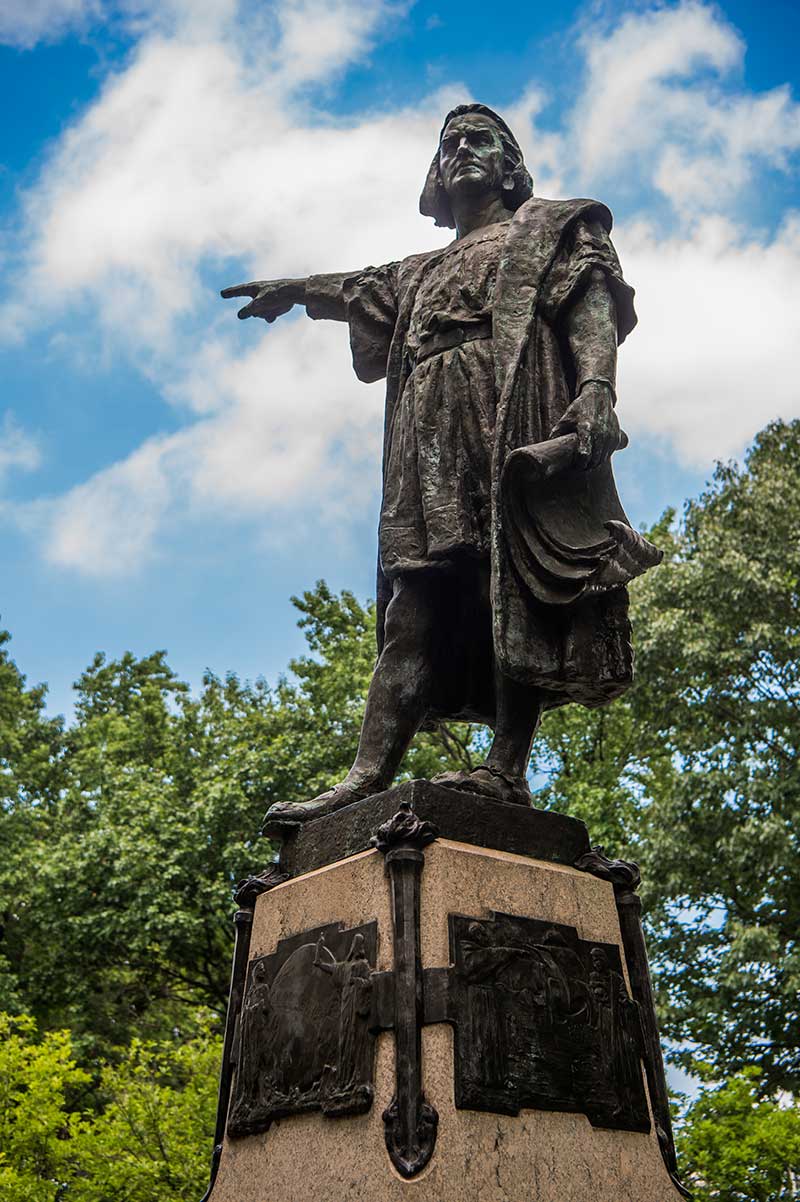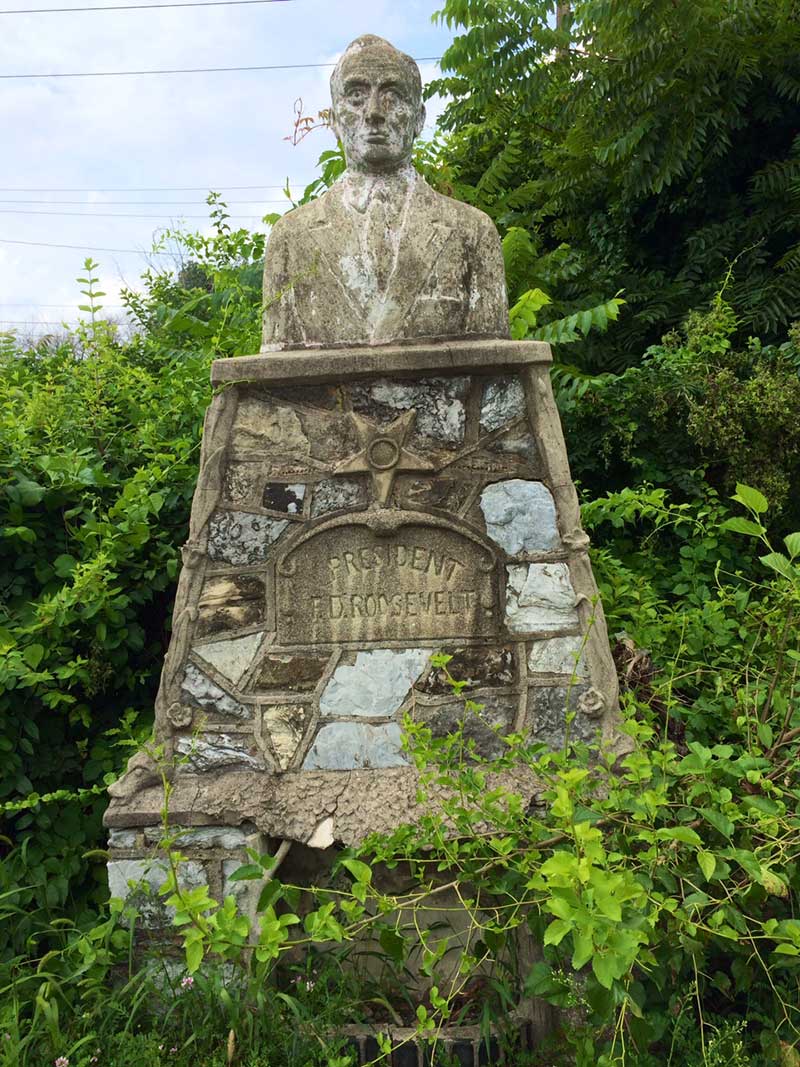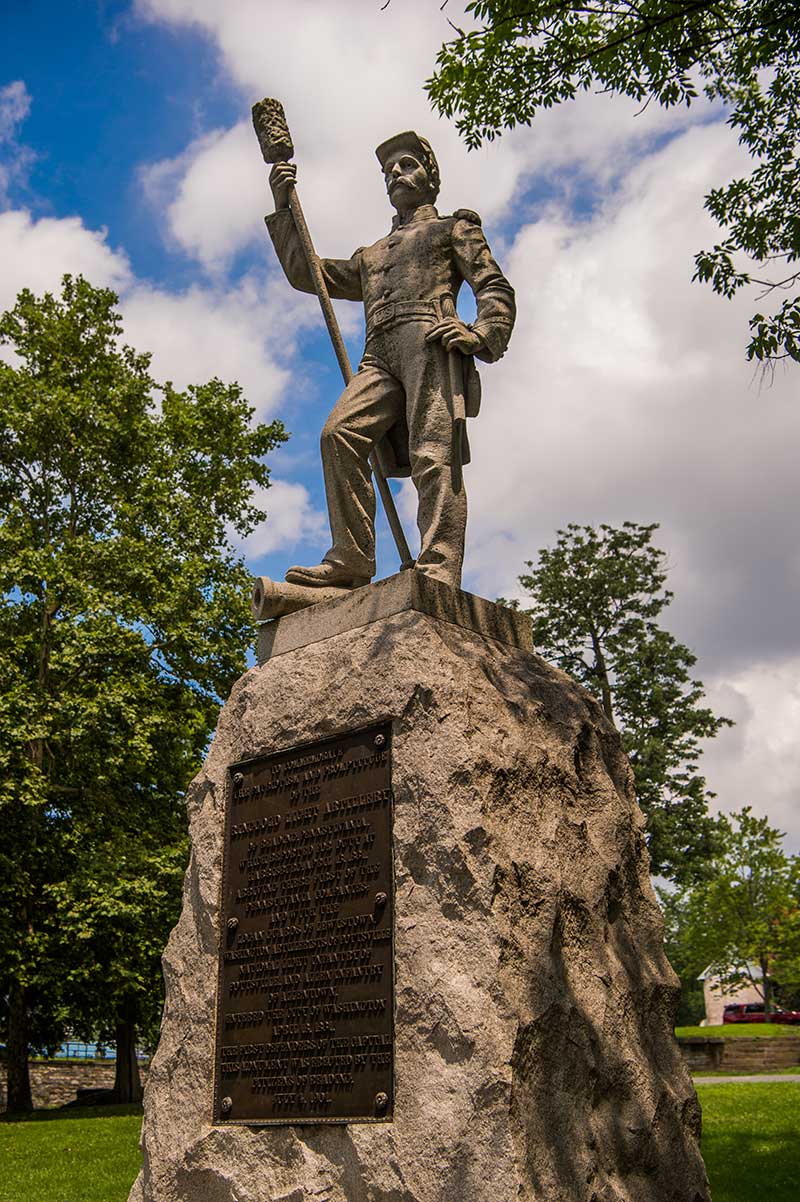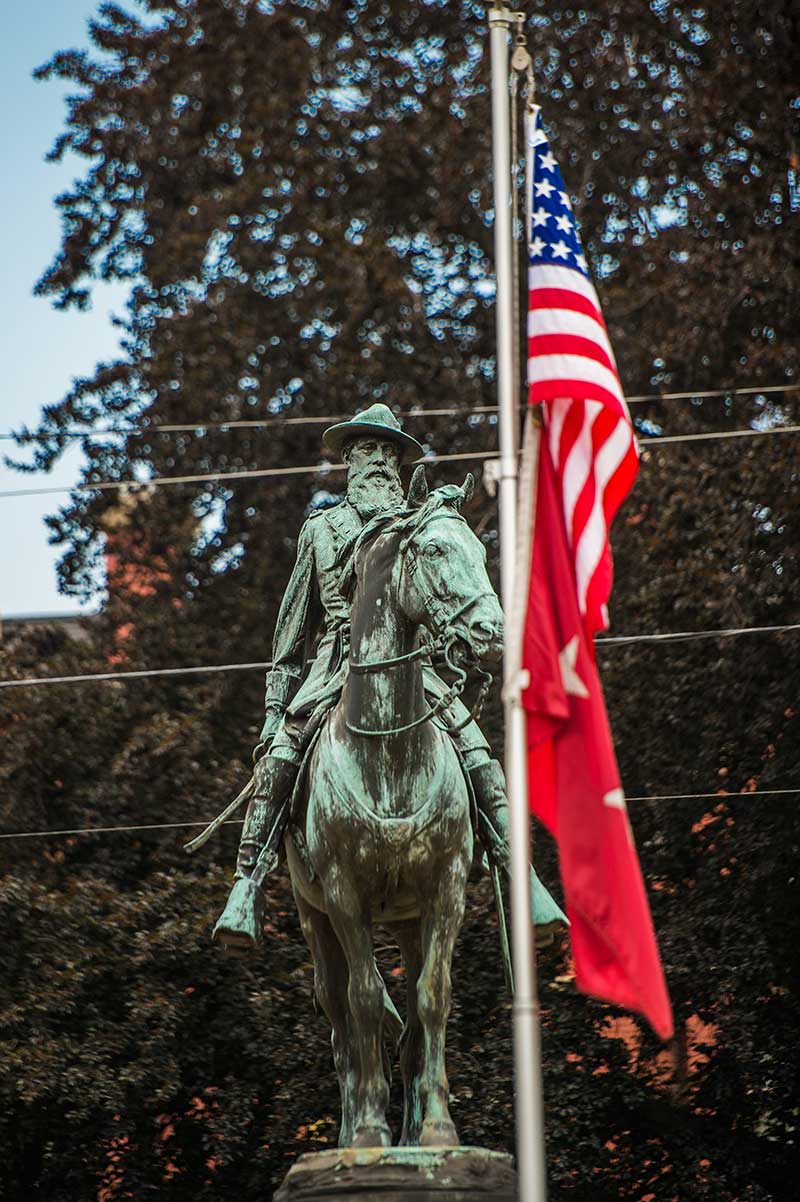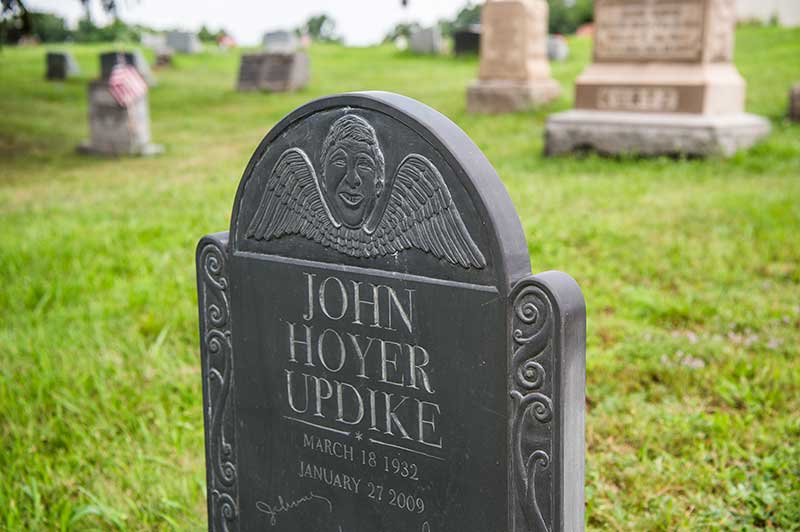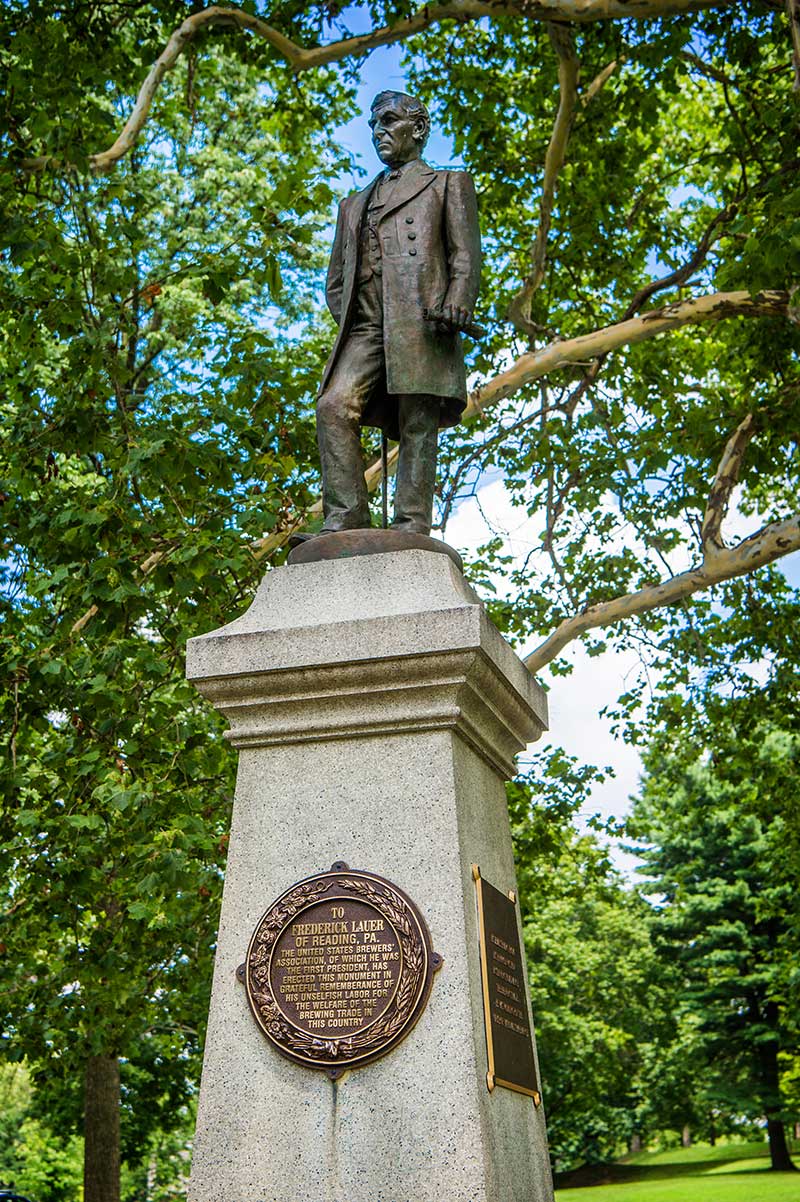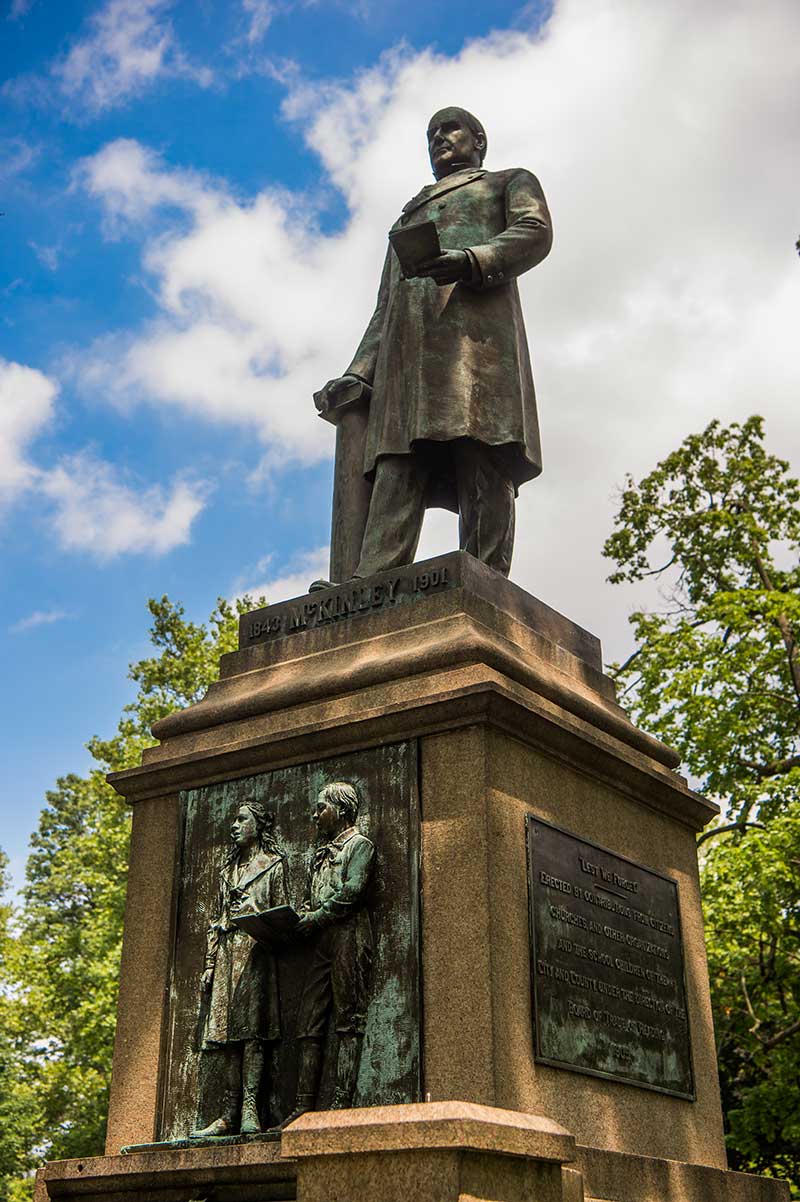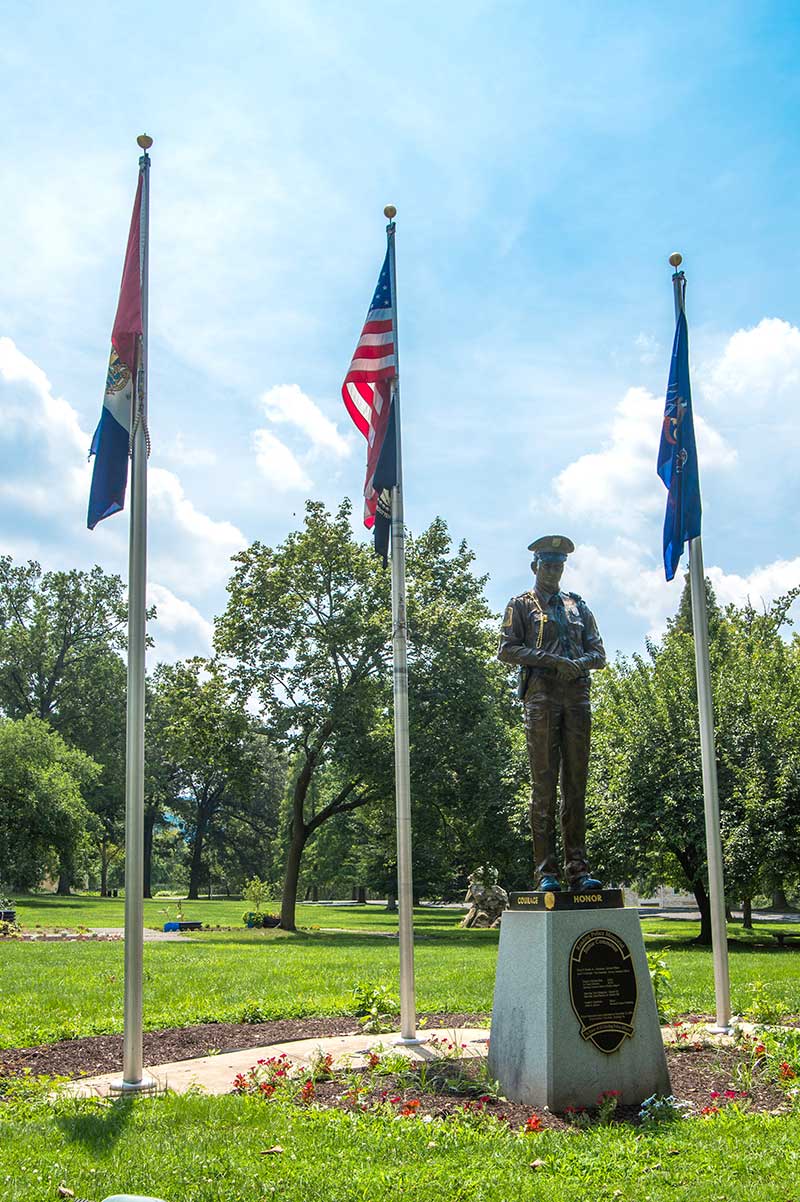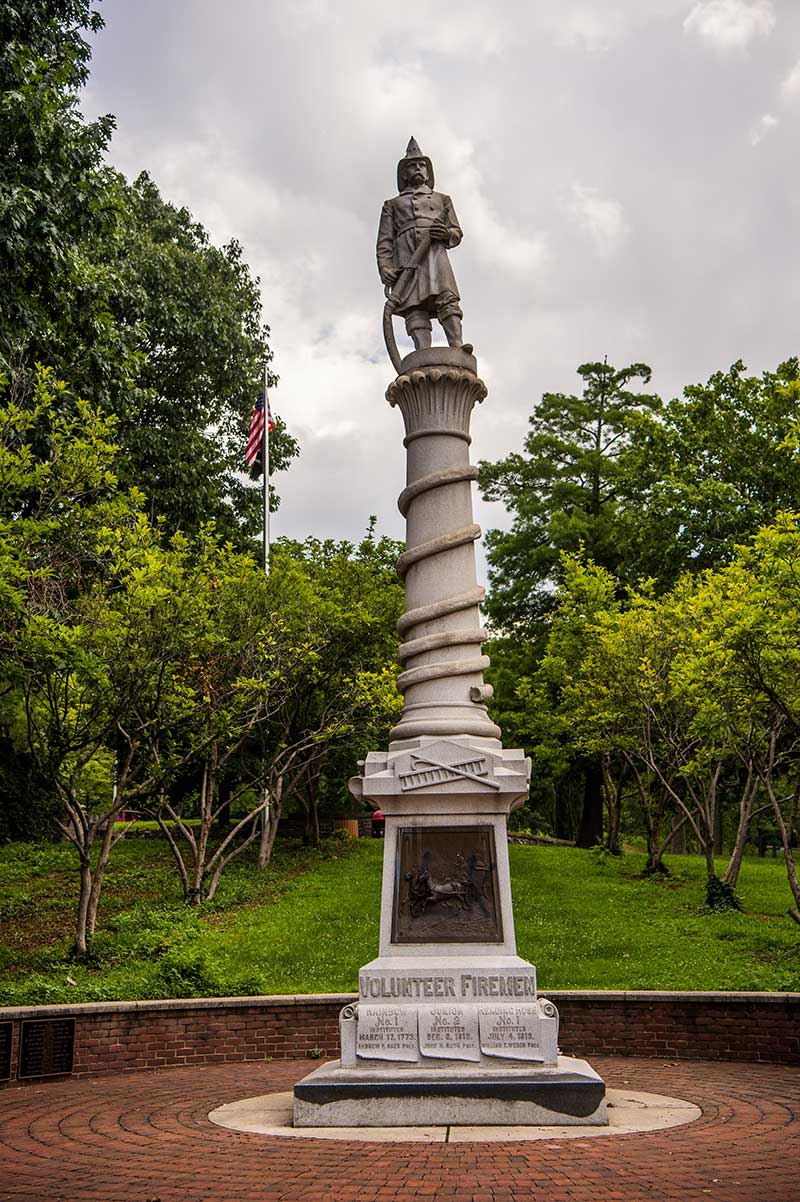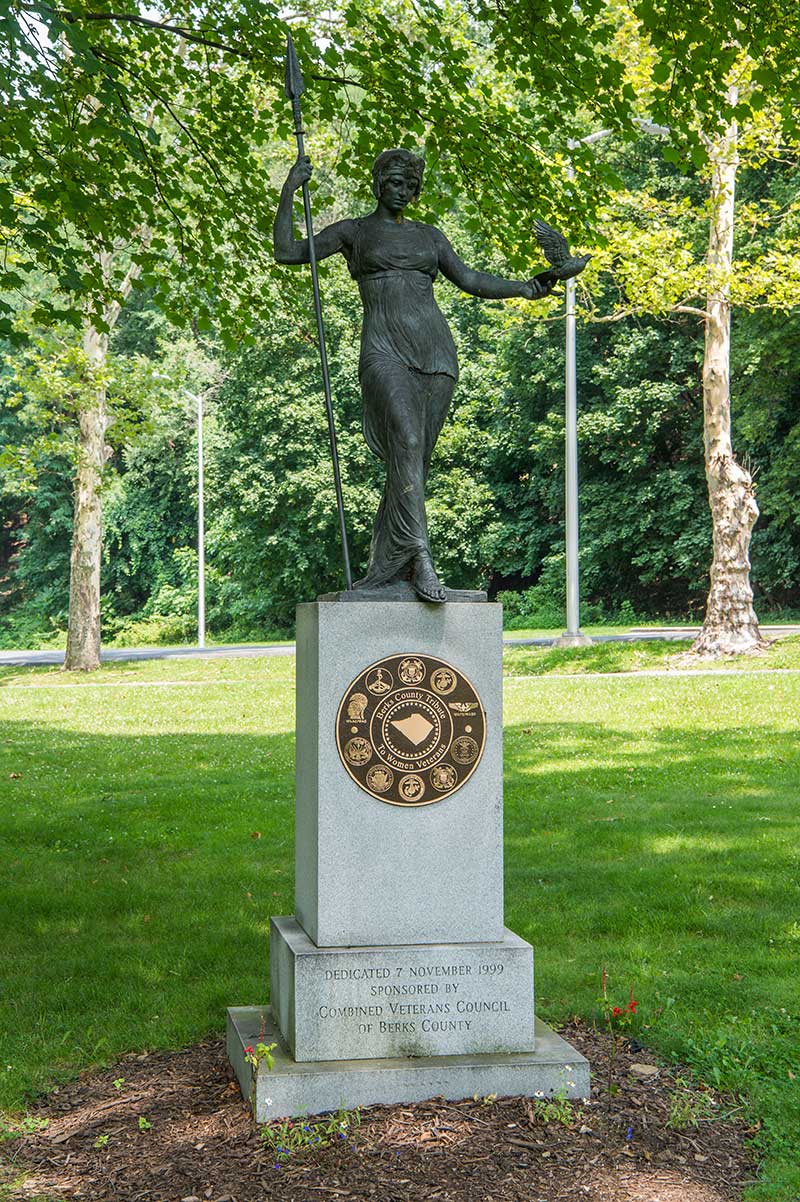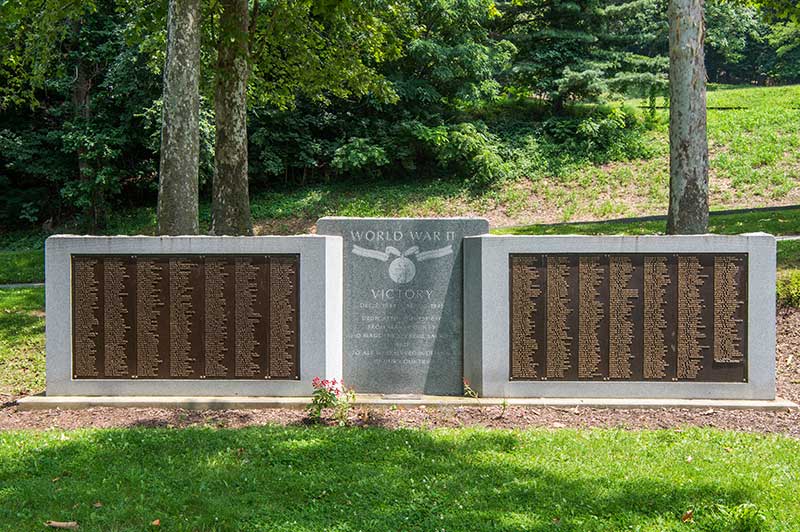October. If there is a more beautiful time to explore Berks County, it’s tough to imagine. These are the days to savor walks or drives that offer different perspectives on the natural and manmade features that comprise our landscape. Monuments and memorials, often located at focal points throughout the community, are among those. This month as you travel the bigger – and sometimes more obscure – byways of Berks, there are some monuments worth checking out.
The Perks of the Park
The best place to begin your journey is Penn’s Common, at City Park in Reading, which has more monuments and memorials per acre than any other spot in Berks.
The newly rehabilitated Veterans’ Memorial Grove is the site of several annual ceremonies honoring countians who served, fought and gave the ultimate sacrifice for the nation.
Thanks to the Berks County Monument Preservation Committee created and led by state Reps. Mark Rozzi and Tom Caltagirone, in coordination with the Historical Society of Berks County, the old monuments are getting a fresh look.
The committee, including many local veterans, first tackled the World War I monument, along with the cannons and flagpole that flank it. Restoration costs exceeded $10,000. Various veterans' groups have also partnered with this committee.
Chad Schlanger, Rozzi’s chief of staff, along with the legislator and volunteers have worked to beautify the grove with upgraded landscaping and a “Freedom Path” walkway constructed by Connelly Lawn and Garden and comprised of bricks bearing the names of veterans and active-service members.
“The Berks County Monument Preservation Fund is excited to have already raised ample funds through our brick sales endeavor to not only complete the entire brick walkway, which will connect all the Veterans’ memorials in City Park, but we also have secured sufficient funding to install a real-time camera system into the park,” says Schlanger. “The camera system will be wired into the city police department’s camera network to allow them to monitor the park and memorials in real time from City Hall. Bricks will continue to be sold for the next one to two years and will be regularly placed into the path.”
More information is available by visiting berksforvets.com.
The new walkway will follow the existing paths, connecting the specific monuments/memorials, including the Vietnam Veterans’ Memorial facing Hill Road, erected in 1988 with the pensive figure of a solitary soldier sitting in the middle of a set of granite steps; the First Defender’s Memorial; the Korean Veterans’ Memorial; the World War II Veterans’ Memorial; the Artillerists’ Memorial; the Submariners’ Memorial; the Desert Storm Veterans’ Memorial and tree; and the Women Veterans’ Memorial.
The grove, sitting on one of the highest points in the park just below the 13th Street cut, offers a view of the Volunteer Fireman’s Memorial Bandshell and Lily Pond. Used throughout the year for events, but particularly noted for its namesake Berks Arts Council Bandshell Series, the structure was erected in 1939. It honors those who’ve served as firefighters since Readingites established the young nation’s first volunteer company, The Rainbows. The Volunteer Firefighters’ Memorial, at the top of Penn Street at 11th, was sculpted of granite by George Eisenbrown in 1901. Most interesting is the carved hose rising from the base to the 19th-century firefighter at the top.
Facing Walnut Street, just downwind from the City Greenhouse, is the Policeman’s Memorial, erected in the early 2000s.
Franklin Delano Roosevelt, then an assistant secretary of the Navy, addressed a crowd of more than 10,000 on July 31, 1914, at the dedication of the U.S.S. Maine anchor, honoring those who served in the Spanish-American War. FDR, of course, went on to become the nation’s longest serving president. History records that FDR and his hosts, munching locally made pretzels, took a spin up to the Pagoda, then less than a decade old, and likely observed, on its top floor, the 18th-century Japanese bell purchased by Pagoda builder William Witman and shipped via the Suez Canal to New York Harbor and then by rail to Reading.
If FDR and his group liked their pretzels, it’s a safe bet they may have enjoyed beer as well.
The Beer Meister of Berks
And in Reading, no one represented the brewing world quite like Frederick Lauer.
Born in Germany in 1810, Lauer emigrated to the United States at age 12. He learned the brewing process at an early age from his father. By age 16, he was foreman for his family’s brewery, and at 25, he became the brewery’s proprietor. For decades to follow, through innovation, hard work and business savvy, Lauer established himself as a brewing pioneer not only locally, but throughout the country. Lauer is considered by many to be one of the early driving forces in establishing what would eventually become modern-day brewing.
The statue, the first bronze one in City Park, was erected in 1885 by the United States Brewers’ Association, of which he was the first president. The Lauer Monument was vandalized in 2015 when the four bronze plaques on its base were stolen.
Brewers stepped forward to make the monument whole again. The national brewers’ group donated $25,000 to the $50,000 repair and restoration cost. The Brewers of Pennsylvania continues to raise the remaining funds. The monument was rededicated May 3, 2016, with scores of public officials and brewers’ association representatives in attendance.
In the statuesque company of Lauer are monuments to Christopher Columbus, often credited with discovering the New World in 1492, and slain President William McKinley.
The 22-foot-tall bronze and granite monument was commissioned in 1903, two years after McKinley succumbed to an assassin’s bullet. Designed by Danish-born sculptor Edward L.A. Pausch, it was crafted by P.F. Eisenbrown and Sons at a cost of $10,000 and funded with local contributions.
The McKinley Statue, dedicated in 1905, was the first in Pennsylvania to honor the 25th president. So admired was it that a photograph of it appeared on page one of The Washington Post on the fifth anniversary of his death.
One irony of City Park is the lack of a permanent memorial to brothers Richard and Thomas Penn, who donated the land to the citizens of Reading for their common use.
Salute to a General
Other notable memorials in the city include the Gen. David McMurtrie Gregg Statue at Centre Avenue and Oley Street in the Centre Park Historic District.
Considered one of the heroes of the battle of Gettysburg, Gregg resigned his commission in January 1865, retiring to Reading, his wife’s home. Nine years later he was appointed by President Grant to be U.S. Consul to Prague, Austria-Hungary. He later was elected auditor general of Pennsylvania. He died in Reading in 1916 as one of the area’s oldest Civil War veterans. The equestrian statue to his memory was erected about five years later.
It was restored in the fall/winter of 1995-96 with state funds as the result of efforts of Caltagirone and the Historical Society; the historic district kicked in more than $1,000 and helped to maintain the refurbished piece. Today, Michael Feeney of the nearby John P. Feeney Funeral Home maintains both the statue and the grassy triangle on which it sits. He has erected a flagpole that flies the American standard bearing 35 stars, the number of states during Gregg’s service.
Tagging it
Just a couple of miles north on Centre Avenue, folks can make a left-hand turn into FirstEnergy Stadium to get up close and personal with the dog tags sculpture. The piece pays tribute to every service member who ever wore dog tags as well as to the original dedicated intent and name: Reading Municipal Memorial Stadium. The 13-foot-tall steel sculpture was designed by Berks County-based Partners Design. It was crafted by L&H Cos. of Reading. The Reading Phillies (now Fightins) management and the Combined Veterans Council of Berks County dedicated it on May 25, 2000.
Outside the city, there are two memorial parkland areas, one unique modern tombstone, and an extremely interesting, yet obscure, presidential memorial that are well worth visiting.
Two Notable Homesteads
Near the extreme west tip of Berks is the exquisite Conrad Weiser Homestead. You’ll be able to see a statue bearing the likeness of Weiser, who was born in Germany in 1696, arrived in the colonies as a teen, and rose to prominence as a great interpreter, negotiator, and trader with Native American tribes from the Hudson Valley in New York to the Tulpehocken Valley, his final home. (He had built and lived in a house on what is now Penn Square in Reading in 1750.) He and his wife Anna Eve had 14 children; he died in Womelsdorf in 1760. The couple is buried at the homestead, surrounded, it’s said, by Native American graves.
A statue of Weiser was dedicated by the Patriot Order of Sons of America in Womelsdorf in 1903. After the establishment of the 26-acre homestead, a statue of Iroquois Chief Shikellamy was also erected.
The gracious homestead park, which includes seven buildings, was designed by brothers Frederick Law Olmstead Jr. and John Charles Olmstead, the sons of acclaimed Frederick Law Olmstead, the designer of New York City’s magnificent Central Park. It is administered by the Pennsylvania Historical and Museum Commission and supported by the Friends of the Conrad Weiser Homestead.
Clear across the county is the 55-acre Daniel Boone Homestead near Birdsboro in Exeter Township.
The famous frontiersman was born on the site in 1734 in a log cabin which was, unfortunately, demolished by later owner John DeTurk in 1779. DeTurk built the gray stone farmhouse in 1750, the same year the Boone family moved to the wilds of North Carolina.
The farmhouse, through its 18th century handcrafted furnishings, offers testimony to the lifestyles of the Boone and DeTurk families who occupied the land. The farm and its surrounds remain much as they might have in Daniel Boone’s time, and time spent there provides visitors with a sense of the woodlands and fields on which the young man roamed and learned to be an expert woodsman by the age of 15.
The homestead, dedicated in an elaborate ceremony on Nov. 1, 1938, is operated by the Friends of the Daniel Boone Homestead, a non-profit volunteer organization.
Remembering John Updike
Perhaps the most unique of all memorial tributes in Berks County is the headstone of Reading native and Pulitzer Prize-winning author John Updike.
The headstone, located in the cemetery of Robeson Evangelical Lutheran Church, Plowville, was designed by his children, carved by son Michael, and placed in July of 2011, two years after his death. Some of his ashes rest at the site, which includes the graves of four generations of his family.
The black slate marker is a salute to those common in New England, where Updike lived most of his adult life. Its characterizations would surely appeal to Updike’s sense of whimsy. At the top is his smiling portrait with angel wings attached. At the bottom there is a scythe suggesting life’s ultimate harvest, an hourglass saluting that precious time frame, and a skeleton.
The stone also bears the names by which Updike was referred to over the course of his life: Johnny by his parents and grandparents; John by friends, family and spouses; Dad and Grandpa. “John Updike” dominates, of course, and there is a JHU, which he used while a young cartoonist.
Carved on the back is a poem, Why the Telephone Wires Dip and the Poles are Cracked and Crooked, written when he was 16 and a high school student in Shillington. It was rejected for publication, but Updike included it in later anthologies after he achieved literary success.
FDR, if you Can Find Him
While the Updike tombstone is unique, a memorial to FDR, the 32nd president, located near the railroad tracks at the far northeastern tip of Morwood Avenue in West Wyomissing may be the most obscure.
The concrete memorial has the bust of a solemn-looking FDR perched atop what seems to be a fireplace, perhaps suggestive of his famous fireside chats, credited with bringing families and the nation together through the Great Depression and World War II years.
It’s located in a railroad right-of-way and has been long neglected. Moved from its original site when the old iron pedestrian bridge spanning the tracks was removed, it now sits at the dead end of Morrow Avenue in a patch of overgrown weeds.
Not a lot is known about the statue’s origins – but it may have been crafted in FDR’s lifetime.
It is attributed to two West Wyomissing residents, A. Gerlach and J. Kleiner, who apparently were machine helpers at the former Berkshire Knitting Mill in Wyomissing. Perhaps they placed the statue at the foot of the bridge they traversed to work each day.
Sources:
The Henry Janssen Library of the Historical Society of Berks County; roadsideamerica.com; Conrad Weiser and Daniel Boone homesteads websites; Chad Schlanger, office of state Rep. Mark Rozzi.
